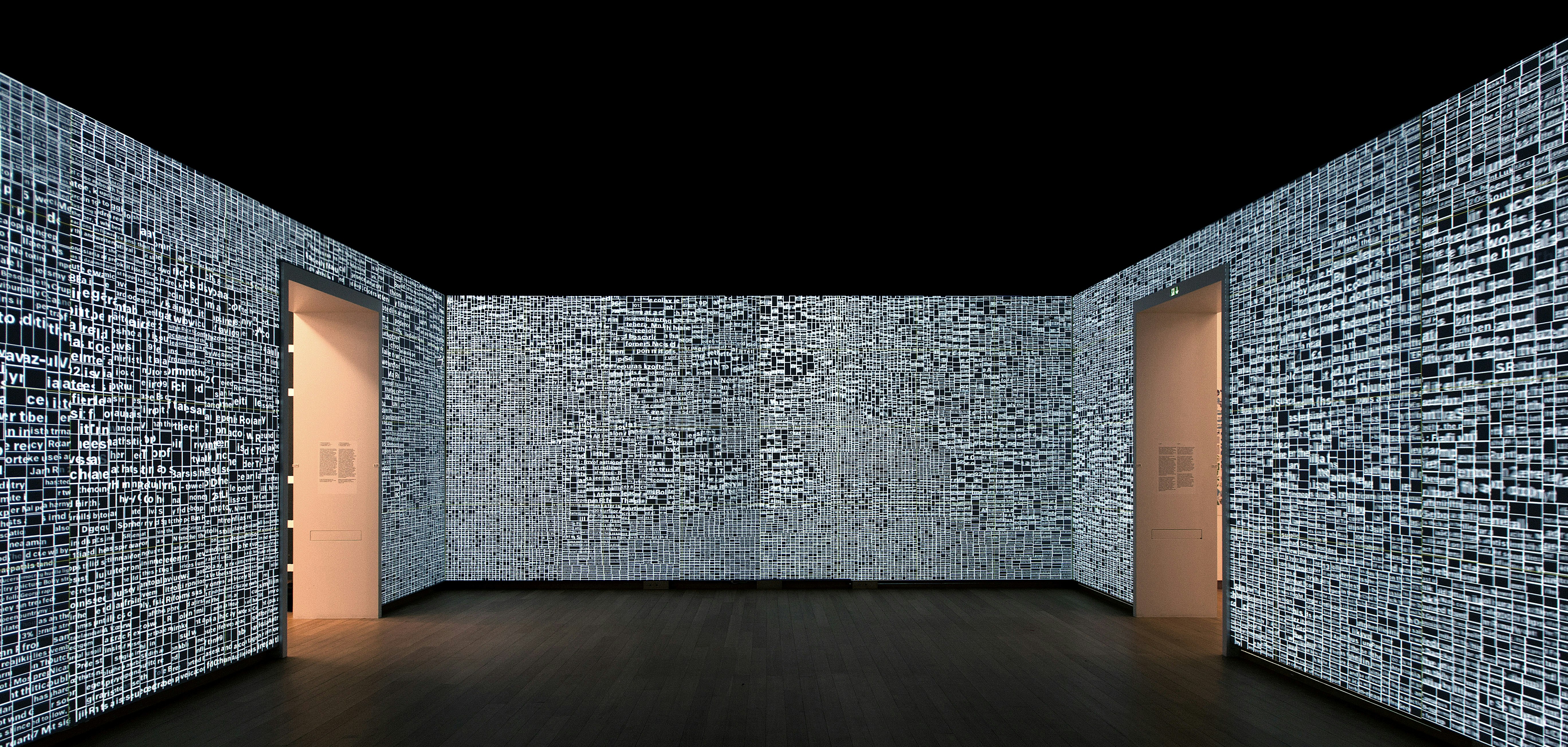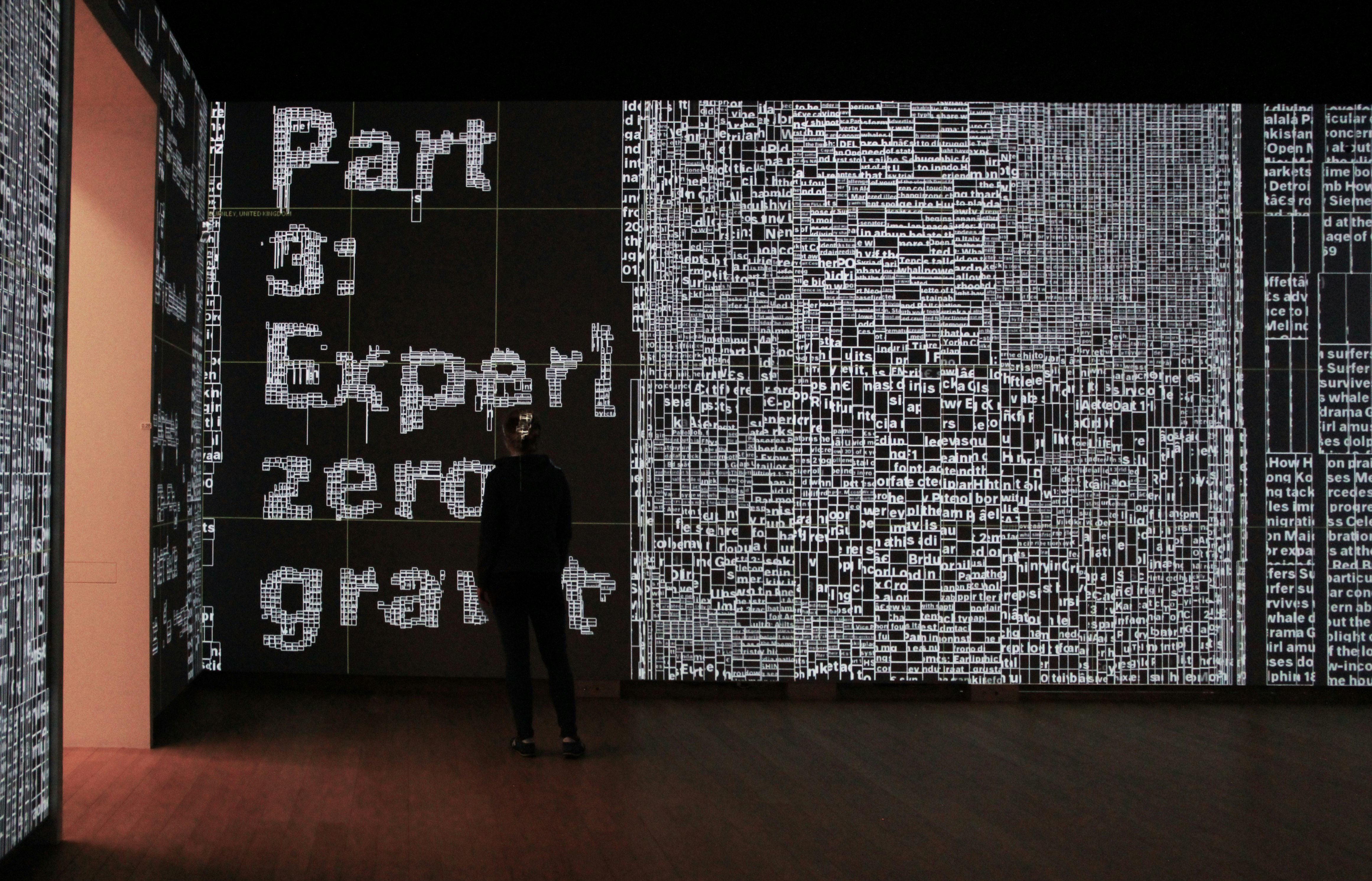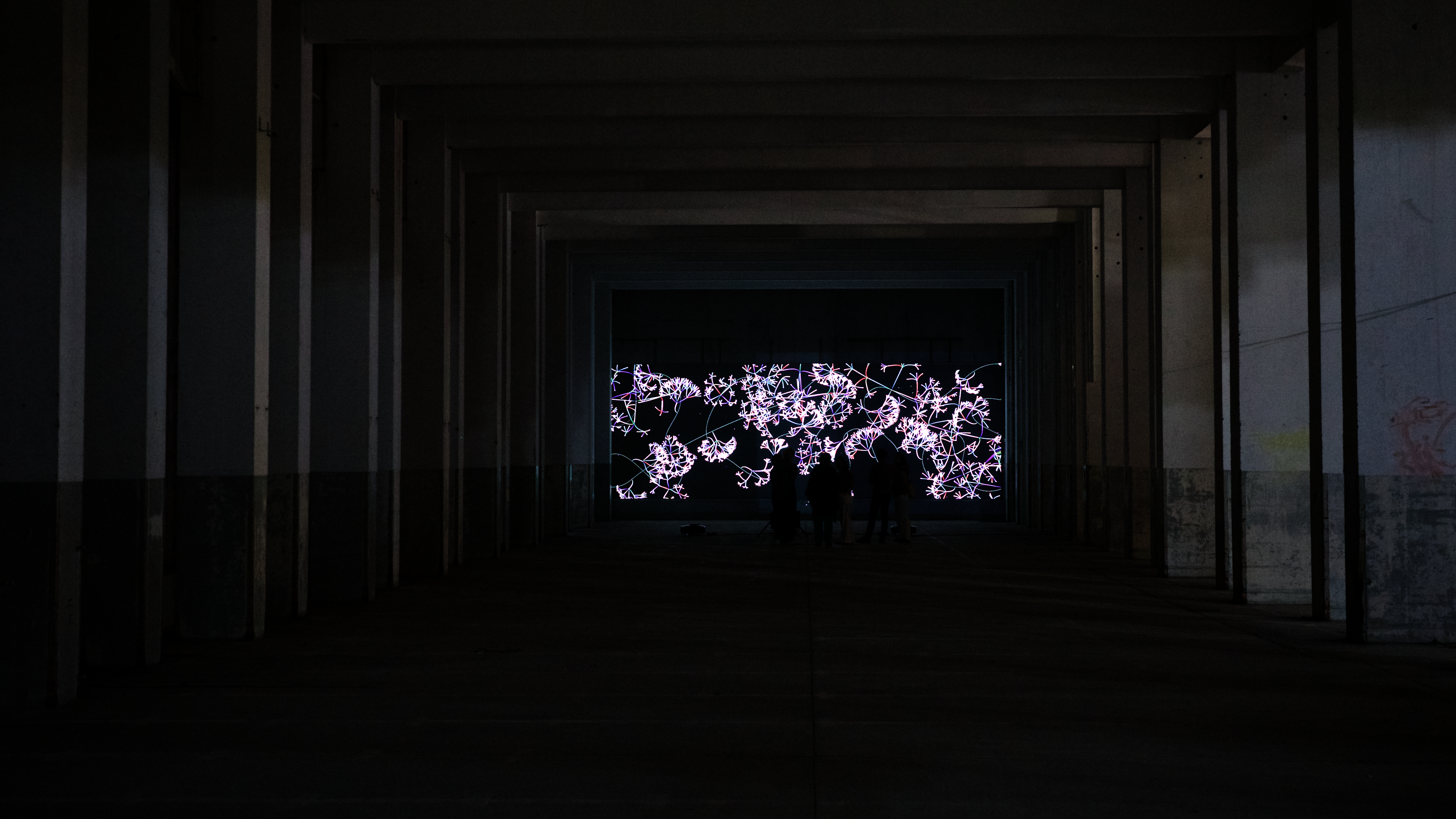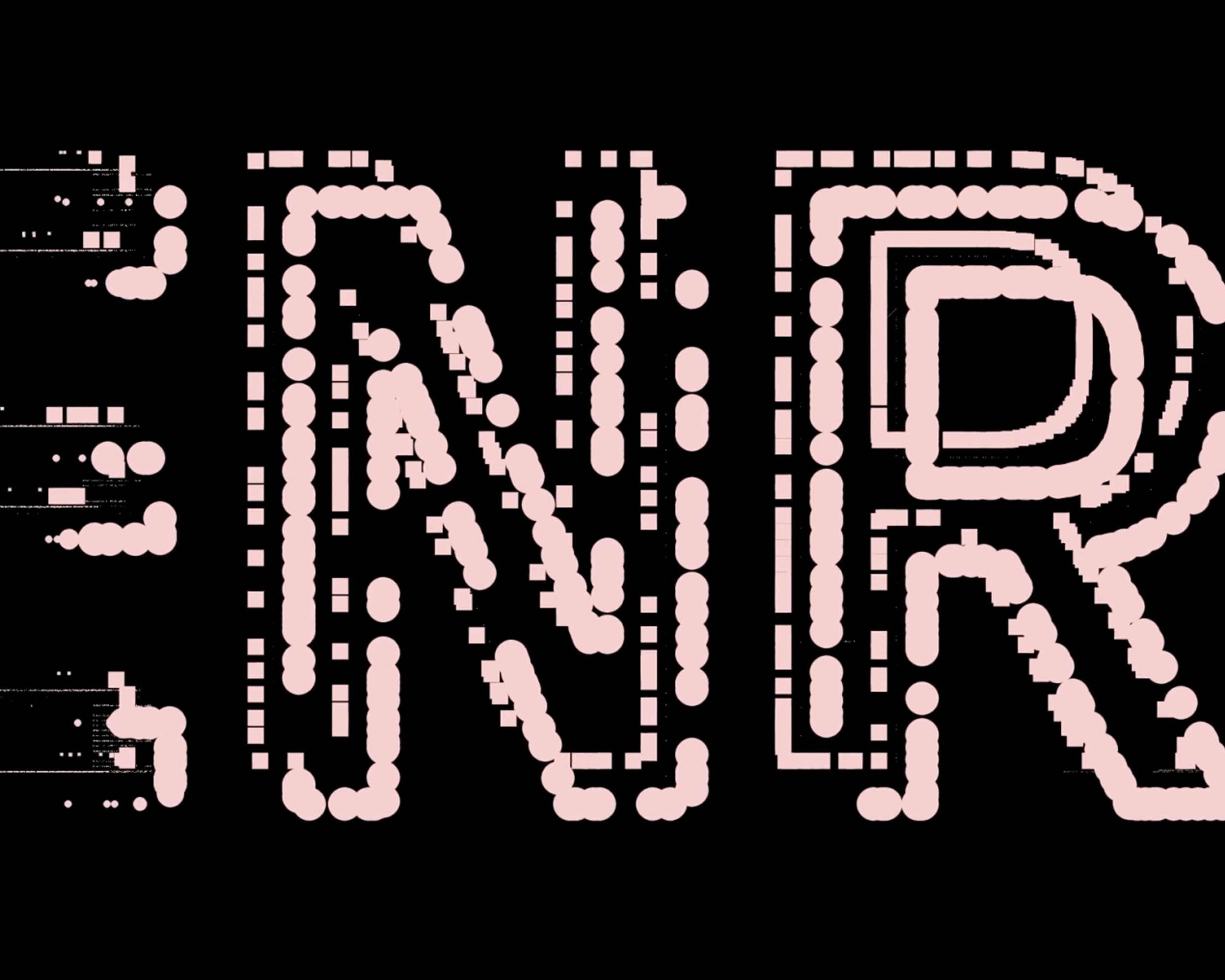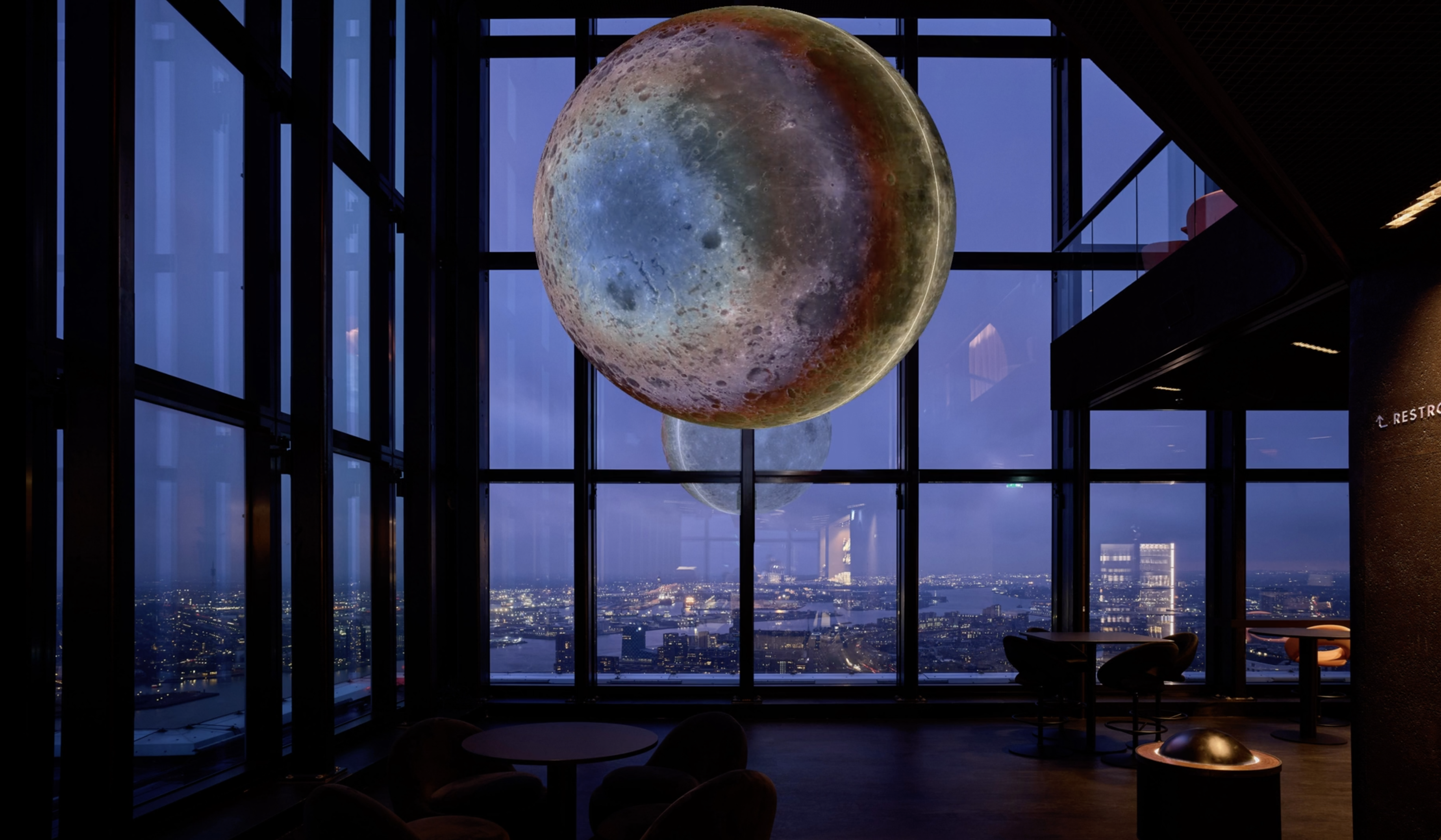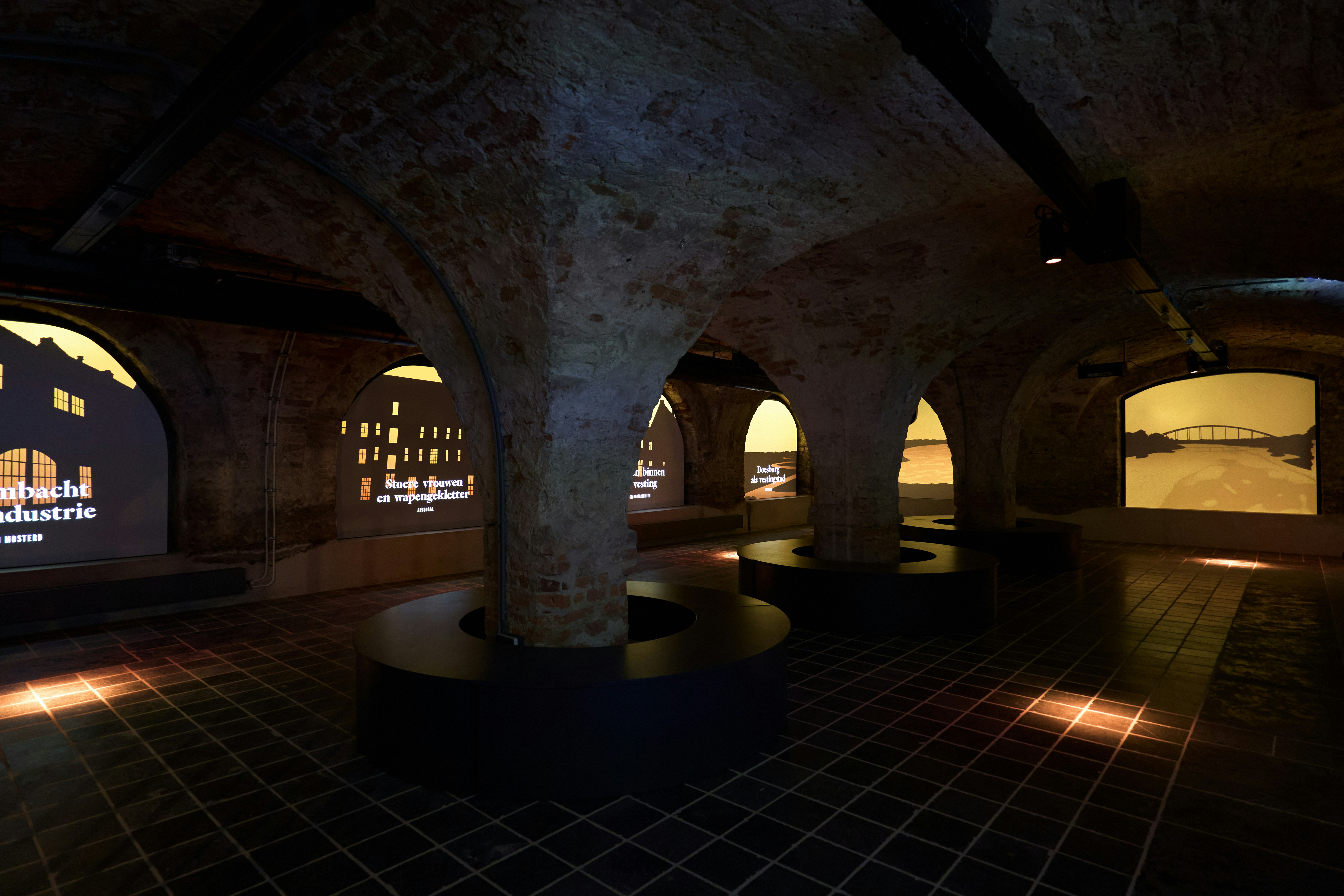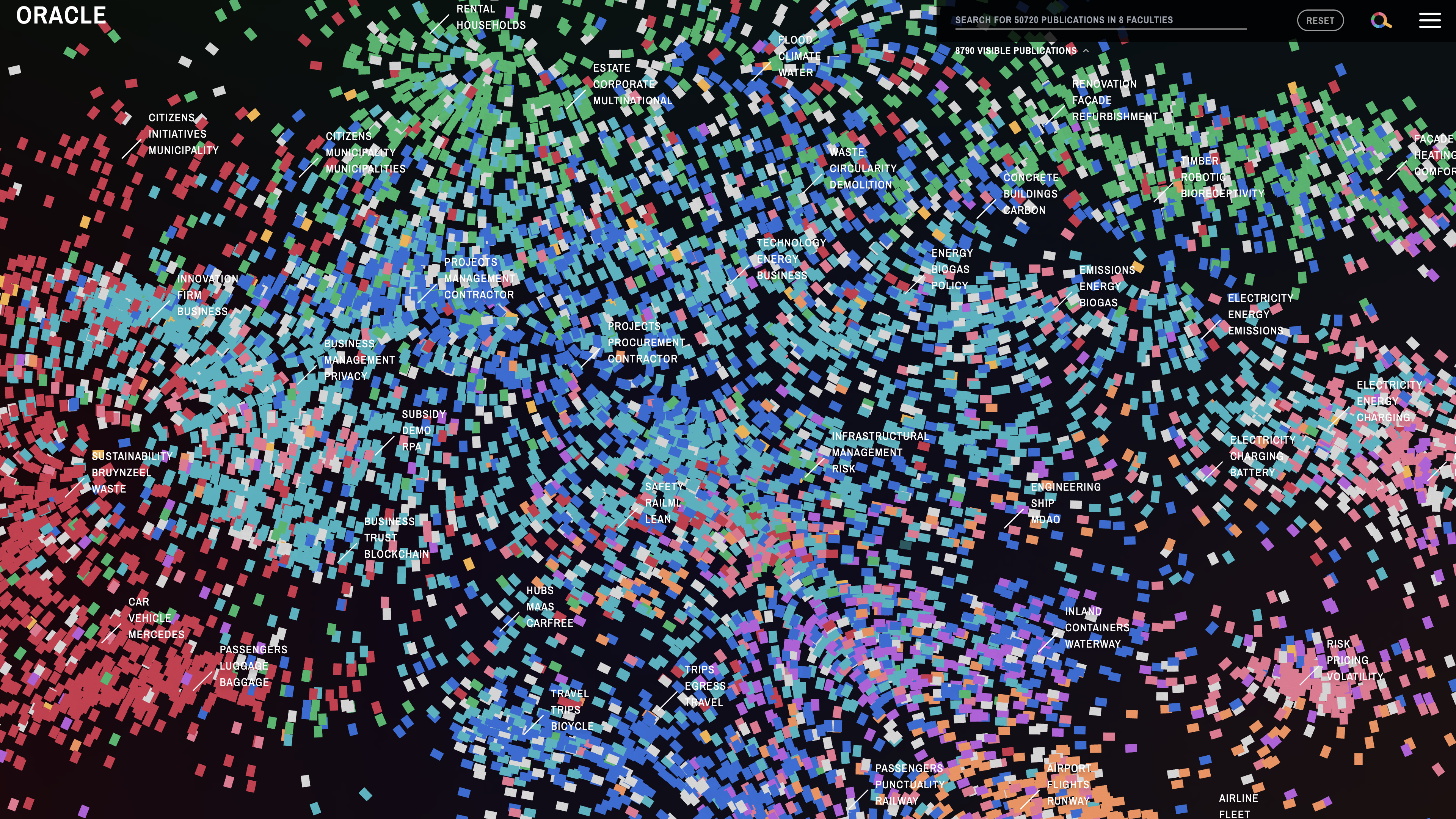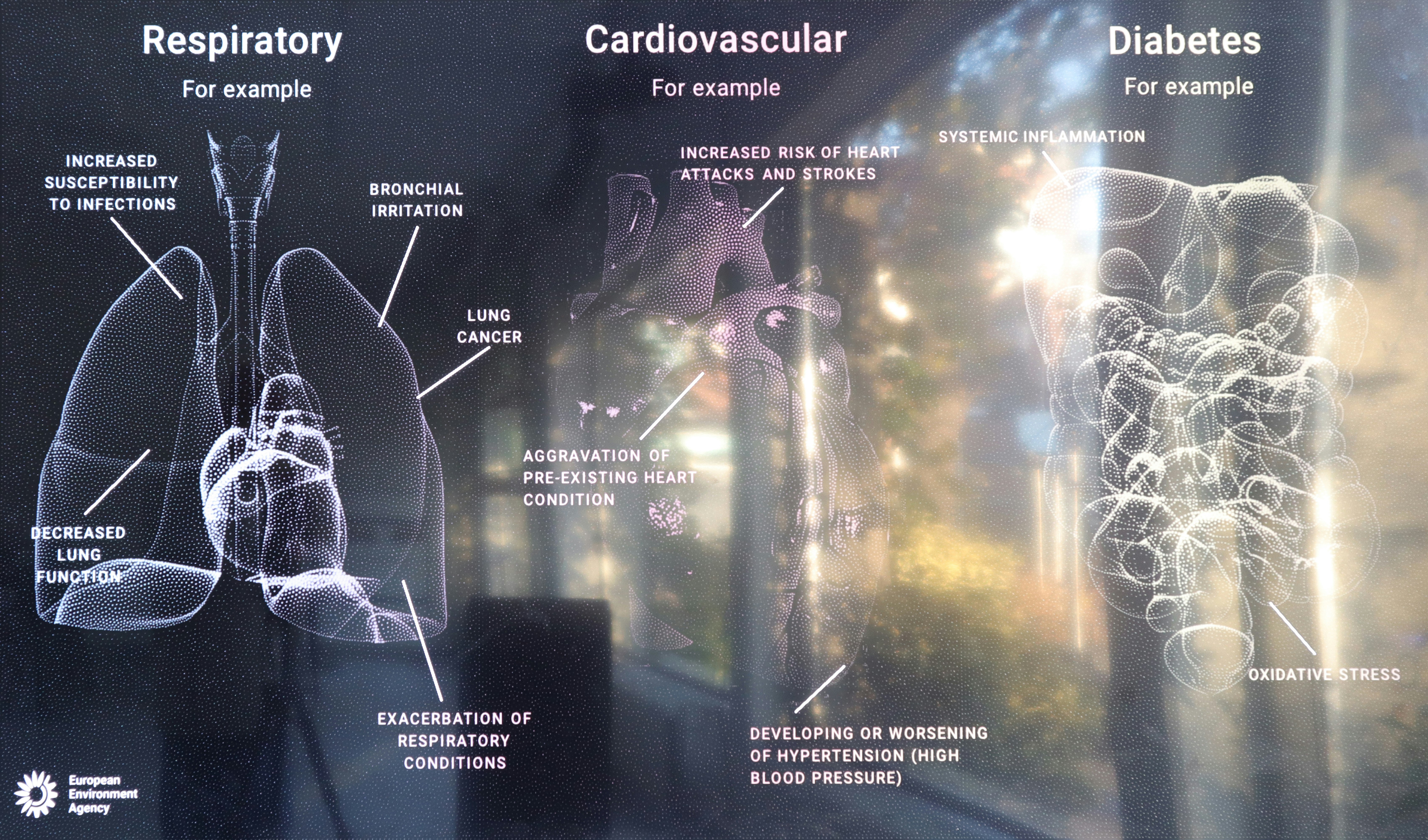The visual dynamic of Schrofer’s typographic art suggests that his designs were created on the computer but they predate the digital era: Schrofer designed everything by hand. The installation visualizes information that continuously surrounds us and is always accessible. By searching for real-time locations currently in the news, like Ground Zero, Reichstag, or Tiananmen square, the installation can locate the panorama images from Google Streetview, abstract them into grids and fill the grids with new information. As a visitor to the space, you are literally 'transported’ to that location and surrounded by all the news associated with that specific location. Instead of a photographic representation, the place is represented purely typographically with a host of new items currently being talked about at that location. Nothing in the gallery space stands still; all information continuously moves.
Jurriaan Schrofer’s oeuvre consists primarily of printed matter that is designed manually. In the 1960s, however, he experimented with new techniques, offset printing for instance, as a means to achieve 'moving typography’. Throughout Schrofer’s work, dynamics, or movement, is the common thread. Starting in the 1970s Schrofer, then a design researcher, explored patterns and structures inspired by the Op Art movement. He meticulously investigated strange perspectives, depth of field and typographic symbols.
